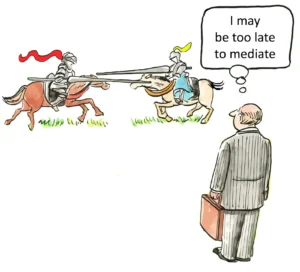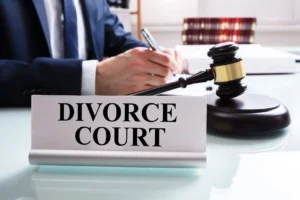Legal Explainer Videos: Building Trust Through Visual Content
In the realm of legal marketing, legal explainer videos have emerged as powerful tools for building trust and establishing authority with potential clients. These visual presentations cut through the complexity of legal concepts, making them accessible to individuals who may find traditional legal communication intimidating. The strategic implementation of visual content allows attorneys to demonstrate expertise while simultaneously humanizing their practice—a combination that proves particularly effective in an industry where trust forms the foundation of client relationships.
The legal profession has traditionally relied on text-heavy communication, complex terminology, and formal interactions. This approach, while appropriate for court documents and legal briefs, creates barriers between attorneys and potential clients seeking legal assistance. Visual legal content bridges this gap by translating complex legal concepts into digestible, engaging formats that resonate with viewers on both intellectual and emotional levels.
For law firms navigating an increasingly competitive digital landscape, the ability to connect with potential clients through compelling visual narratives represents a significant competitive advantage. These productions serve not merely as marketing tools but as educational resources that demonstrate a firm’s commitment to client understanding and empowerment—values that directly contribute to trust-building in the attorney-client relationship.
The Psychology of Trust in Legal Representation
Trust in legal representation develops through a complex interplay of perceived competence, authenticity, and relatability. When potential clients evaluate attorneys, they assess not only credentials and experience but also intangible qualities that signal trustworthiness. This evaluation occurs largely through non-verbal cues and emotional responses that visual content effectively triggers.
The decision to retain legal counsel often involves significant emotional and financial investment. Clients must feel confident that their attorney possesses both the technical expertise to handle their matter and the personal qualities that make them approachable and reliable. Legal video marketing addresses both dimensions by showcasing professional knowledge while revealing the human elements of legal practice.
Research consistently demonstrates that visual information processing creates stronger emotional connections than text alone. When viewers observe attorneys explaining legal concepts clearly and confidently on camera, they subconsciously evaluate facial expressions, body language, and vocal qualities—all elements that contribute to trust formation. This multi-sensory experience creates a more complete impression than written content can achieve.
Types of Legal Explainer Videos
Attorney profile videos serve as digital introductions that humanize legal professionals. These productions typically feature attorneys speaking directly to viewers about their background, practice areas, and approach to client representation. The authentic presentation of an attorney’s personality and values helps potential clients assess personal compatibility—a crucial factor in the decision to engage legal services.
Case study videos demonstrate practical application of legal expertise through anonymized client success stories. By walking viewers through specific legal challenges and their resolutions, attorneys demonstrate problem-solving capabilities while providing tangible evidence of their effectiveness. These narratives help potential clients envision how the firm might handle their own legal matters.
Process-oriented explainer videos break down complex legal procedures into clear, sequential steps. Whether illustrating the stages of litigation, the components of estate planning, or the requirements for business formation, these productions create transparency around legal processes that clients often find mysterious or intimidating. This transparency directly contributes to trust by reducing uncertainty and setting appropriate expectations.
Educational videos addressing frequently asked legal questions position attorneys as accessible experts and valuable resources. By anticipating and addressing common concerns, these productions demonstrate both expertise and client-centeredness. The willingness to share knowledge freely signals confidence and generosity—qualities that enhance trustworthiness perceptions.
Building Trust Through Authentic Visual Presentation
Authenticity in legal video content requires balancing professional presentation with genuine human connection. While polished production values signal competence and attention to detail, overly scripted or artificial presentations can undermine trust. The most effective legal videos maintain professional standards while allowing attorneys’ authentic personalities and passion for their work to shine through.
The visual environment featured in legal videos significantly impacts viewer perceptions. Traditional law office settings with legal books, credentials, and formal attire reinforce professional authority but may create distance. Conversely, more approachable settings and business casual attire may enhance relatability but potentially diminish perceptions of gravitas. Strategic decisions about visual presentation should align with the firm’s positioning and target client preferences.
Personal storytelling creates powerful connections when appropriately incorporated into legal videos. Attorneys who share their motivations for practicing law, their commitment to specific client populations, or their approach to challenging cases reveal dimensions of character that text cannot convey. These personal elements humanize legal professionals while demonstrating values that matter to potential clients.
Body language and vocal delivery significantly influence trust perceptions in video presentations. Attorneys who maintain appropriate eye contact, use natural gestures, and speak with confident but conversational vocal patterns create stronger connections with viewers. These non-verbal elements communicate authenticity and engagement that transcend the actual content being delivered.
Legal and Ethical Considerations in Video Marketing
The American Bar Association and state bar associations impose specific regulations on attorney advertising that apply directly to video content. These rules typically prohibit false or misleading statements, unverifiable claims about results, and inappropriate comparisons to other attorneys. Legal explainer videos must carefully navigate these restrictions while still creating compelling content that effectively communicates value.
Disclaimers play an essential role in legal video marketing, clarifying that educational content does not constitute legal advice or establish attorney-client relationships. These notices protect both attorneys and viewers by setting appropriate expectations about the limited purpose of the content. Effective disclaimers maintain compliance without disrupting the viewer experience or undermining the video’s educational value.
Client confidentiality remains paramount even in marketing contexts. Legal videos featuring client testimonials or case studies must obtain appropriate permissions and carefully anonymize identifying details. The ethical obligation to protect client information extends to all forms of communication, including marketing videos that might inadvertently reveal confidential information through visual elements or narrative details.
Representations about expertise and specialization require particular care in legal videos. Many jurisdictions restrict claims of specialization to formally certified specialists, while others prohibit such claims entirely. Attorneys must accurately represent their experience and qualifications without making statements that could violate applicable rules of professional conduct.
Technical Elements of Effective Legal Videos
Production quality significantly impacts the credibility of legal explainer videos. Professional lighting, clear audio, and stable camera work create a polished presentation that reflects the standards viewers expect from legal professionals. While production need not be elaborate, technical shortcomings can undermine content quality and diminish trust.
Visual aids enhance comprehension of complex legal concepts when thoughtfully incorporated. Charts, diagrams, animated sequences, and text overlays can illustrate relationships, processes, and key points that might otherwise require lengthy verbal explanations. These elements make content more accessible while demonstrating the attorney‘s commitment to client understanding.
Script development for legal videos requires balancing legal accuracy with conversational accessibility. Effective scripts translate legal concepts into plain language without oversimplification or inaccuracy. This translation process demonstrates both expertise and client-centeredness—the ability to understand complex matters and explain them clearly to non-lawyers.
Video length significantly impacts viewer engagement and information retention. While comprehensive legal explanations might require substantial time, viewer attention typically diminishes after a few minutes. Segmenting complex topics into focused, concise videos often proves more effective than creating longer productions that cover multiple aspects of a subject.
Integrating Legal Explainer Videos into Marketing Strategy
Strategic placement of legal video content across digital platforms maximizes reach and impact. Firm websites, YouTube channels, social media platforms, and email campaigns each offer distinct advantages for video distribution. Understanding platform-specific audience expectations and technical requirements ensures optimal performance across these varied environments.
Website integration of legal videos enhances visitor engagement and extends time on site—metrics that positively influence search engine rankings. Strategic placement on practice area pages, attorney profiles, and resource sections creates natural opportunities for visitors to engage with video content that addresses their specific legal questions or concerns.
Social media distribution requires platform-specific optimization of legal videos. Format requirements, optimal lengths, and audience expectations vary significantly across platforms like LinkedIn, Facebook, and Instagram. Tailoring content for each environment—whether through editing, captioning, or promotional framing—maximizes engagement potential.
Email marketing campaigns featuring video content consistently outperform text-only communications in open rates, click-through rates, and conversion metrics. Including video thumbnails with play buttons in email communications creates visual interest that encourages recipients to engage with the content. This engagement provides measurable data on client interests and concerns.
Measuring Effectiveness and ROI
Engagement metrics provide quantitative insights into viewer behavior and content performance. View counts, watch time, drop-off points, and interaction rates reveal which topics and presentation styles resonate most effectively with target audiences. These metrics guide refinement of content strategy and production approaches.
Conversion tracking connects video engagement to tangible business outcomes. By implementing appropriate tracking mechanisms, firms can measure how video viewership correlates with consultation requests, contact form submissions, and ultimately new client acquisition. This data demonstrates return on investment while identifying the most productive video topics and formats.
Qualitative feedback from clients and prospects offers valuable context for interpreting quantitative metrics. Direct comments, consultation discussions, and formal surveys reveal how video content influences perceptions and decision-making. This feedback often highlights specific elements that particularly resonated with viewers or addressed their concerns.
Competitive analysis provides benchmarking context for evaluating video performance. Reviewing comparable content from other firms—considering both metrics and presentation approaches—helps identify industry standards and opportunities for differentiation. This analysis informs strategic decisions about content focus, production quality, and distribution methods.
Practical Implementation for Law Firms
Resource allocation for video production varies widely based on firm size, budget constraints, and marketing objectives. Options range from professional production companies specializing in legal content to in-house capabilities with modest equipment investments. The appropriate approach balances quality requirements with available resources while considering the strategic importance of visual content in the firm’s overall marketing plan.
Content planning establishes a sustainable framework for ongoing video production. Developing a content calendar that aligns with firm priorities, practice area focus, and seasonal relevance ensures consistent output without overwhelming resources. This planning process identifies opportunities to repurpose content across formats and platforms, maximizing return on production investments.
Attorney preparation for on-camera presentation often requires specific training and practice. Even experienced courtroom advocates may find the camera environment challenging initially. Preparation typically includes message development, delivery practice, and techniques for maintaining natural presentation despite the artificial context of video recording.
Compliance review processes ensure that all video content meets applicable ethical and regulatory requirements before publication. Establishing clear review protocols—potentially including both marketing professionals and ethics counsel—prevents compliance issues while maintaining production momentum. These processes should address both explicit content and implicit messages that might raise regulatory concerns.
Future Trends in Legal Video Marketing
Interactive video technologies are transforming passive viewing into engaging experiences. Features like clickable hotspots, viewer-directed narrative paths, and embedded response mechanisms create opportunities for viewers to customize their learning experience. These technologies enhance engagement while providing valuable data on viewer interests and concerns.
Personalized video communication leverages automation to create customized content for specific audiences or individuals. From segment-targeted educational series to individually personalized follow-up messages, these approaches combine the emotional impact of video with the relevance of tailored content. The resulting communications feel both personal and professional.
Mobile optimization has become essential as viewing habits increasingly shift toward smartphones and tablets. Vertical video formats, mobile-friendly text sizing, and connection-conscious streaming quality ensure effective delivery regardless of viewing device. These considerations particularly matter for reaching younger demographics who predominantly consume content on mobile platforms.
Analytics-driven content refinement creates a continuous improvement cycle for legal video marketing. Advanced metrics reveal not just what content performs well but why specific elements resonate with viewers. This granular understanding guides iterative improvements in topic selection, presentation approach, and production techniques.
Building a Comprehensive Video Library
Practice area coverage through dedicated video series creates a comprehensive resource library for potential clients. Systematically addressing the questions and concerns relevant to each practice area demonstrates both expertise breadth and commitment to client education. This library becomes a valuable resource that attracts organic traffic while supporting business development efforts.
Frequently asked questions addressed through concise video responses create an accessible knowledge base for potential clients. These productions anticipate and answer common inquiries, demonstrating both expertise and client-centeredness. The resulting content serves both marketing and client service functions by providing immediate answers to pressing questions.
Timely updates addressing legal developments maintain content relevance while demonstrating the firm’s currency with evolving law. These updates position the firm as a reliable source of current information—a valuable perception in a field where outdated knowledge can have serious consequences. Regular updates also create natural opportunities for ongoing client communication.
Testimonial collections featuring satisfied clients provide social proof that complements educational content. These authentic endorsements validate the expertise demonstrated in explainer videos while adding emotional resonance through real client experiences. When properly executed with appropriate permissions and ethical compliance, these testimonials powerfully enhance trust.
Ethical Storytelling in Legal Videos
Client story presentation requires balancing compelling narrative with ethical obligations. While client stories powerfully illustrate legal concepts and outcomes, they must be presented with appropriate permissions, anonymization where necessary, and careful attention to accuracy. Ethical storytelling neither exaggerates outcomes nor creates unrealistic expectations about similar matters.
Outcome representation demands particular care in legal videos. Bar association rules typically prohibit guarantees or predictions about results, along with unverifiable comparisons to other attorneys. Ethical presentations focus on process expertise and problem-solving approaches rather than specific outcome promises that might mislead viewers or violate professional conduct rules.
Diversity and inclusion considerations ensure that legal videos reflect and respect the full spectrum of potential clients. Thoughtful attention to representation—in featured attorneys, scenarios depicted, and examples used—demonstrates the firm’s commitment to serving all community members. This inclusive approach both reflects ethical values and expands potential client connections.
Educational focus maintains the primary purpose of legal explainer videos as informational resources rather than direct solicitations. This approach aligns with both ethical best practices and effective trust-building, as viewers respond more positively to content that prioritizes their understanding over immediate conversion. The resulting trust ultimately proves more valuable than aggressive marketing approaches.
Conclusion: The Strategic Value of Visual Trust-Building
Legal explainer videos represent a significant opportunity for attorneys to bridge communication gaps with potential clients. By translating complex legal concepts into accessible visual presentations, these productions demonstrate both expertise and client-centeredness—a powerful combination for building trust. The resulting connections create foundations for productive attorney-client relationships based on understanding and confidence.
The investment in quality visual content yields returns that extend beyond immediate marketing metrics. While view counts and conversion rates provide quantifiable measures of success, the deeper value lies in the trust relationships established through authentic, educational content. These relationships form the foundation for sustainable practice growth and client satisfaction.
For attorneys committed to effective client communication and practice development, legal video marketing offers a uniquely powerful medium. By embracing visual storytelling with attention to both technical quality and ethical standards, legal professionals can create meaningful connections with potential clients while demonstrating the expertise and values that define their practice.
Citations:
- Video Marketing for Legal Professionals
- Legal Explainer Videos to Attract Clients
- Building Trust with Video Content
- Lawyers Video Marketing Guide
- Legal Considerations for Video Marketing
- Video Marketing Guide for Lawyers
- Video Content Strategy for Law Firms
- Creating Attorney Animated Explainer Videos
- Ethics in Lawyer Video Marketing
- Guide to Legal Explainer Videos
- Video Marketing Strategies for Lawyers
- Benefits of Legal Explainer Videos
- Lawyer Video Marketing Resources
- Law Firm Video Marketing
- 12 Ways Law Firms Use Video
- Explainer Videos for Law Firms
- 10 Video Ideas for Lawyers
- Video Content for Legal Client Acquisition
- Explainer Videos by Paperstreet
- Law Firm Videos by ENX2
- Best Law Explainer Videos
- Video Marketing That Works for Lawyers
- Law Firm Video Marketing Tutorial
- Legal Aspects of Promotional Videos
- Ultimate Guide to Video Marketing
- Advertising Standards for Video Marketing
- Video Marketing Guide for Lawyers
- Video Types for Lawyers
- Guide to Explainer Videos
- Essential Law Firm Video Trends
- Best Practices for Video Marketing
- Effective Explainer Video Tips
- 8 Essential Videos for Law Firms
- Tips for Creating Explainer Videos
- How to Make an Explainer Video
- Animated Videos for Law Firms
- Best Explainer Video Production Examples
- Power of Video Marketing for Lawyers
- Law Firm Video Editing for Trust
- Video Marketing Tutorial for Lawyers
- California Bar Ethics Rules Videos
- Explainer Video for Legal Services
- Law Firm Video Marketing Guide
- Video Advertising Laws and Ethics
- Step-by-Step Guide to Explainer Videos
- Best Legal Explainer Videos
- 10 Video Ideas for Legal Practice
- 15 Tips for Professional Law Firm Videos




















